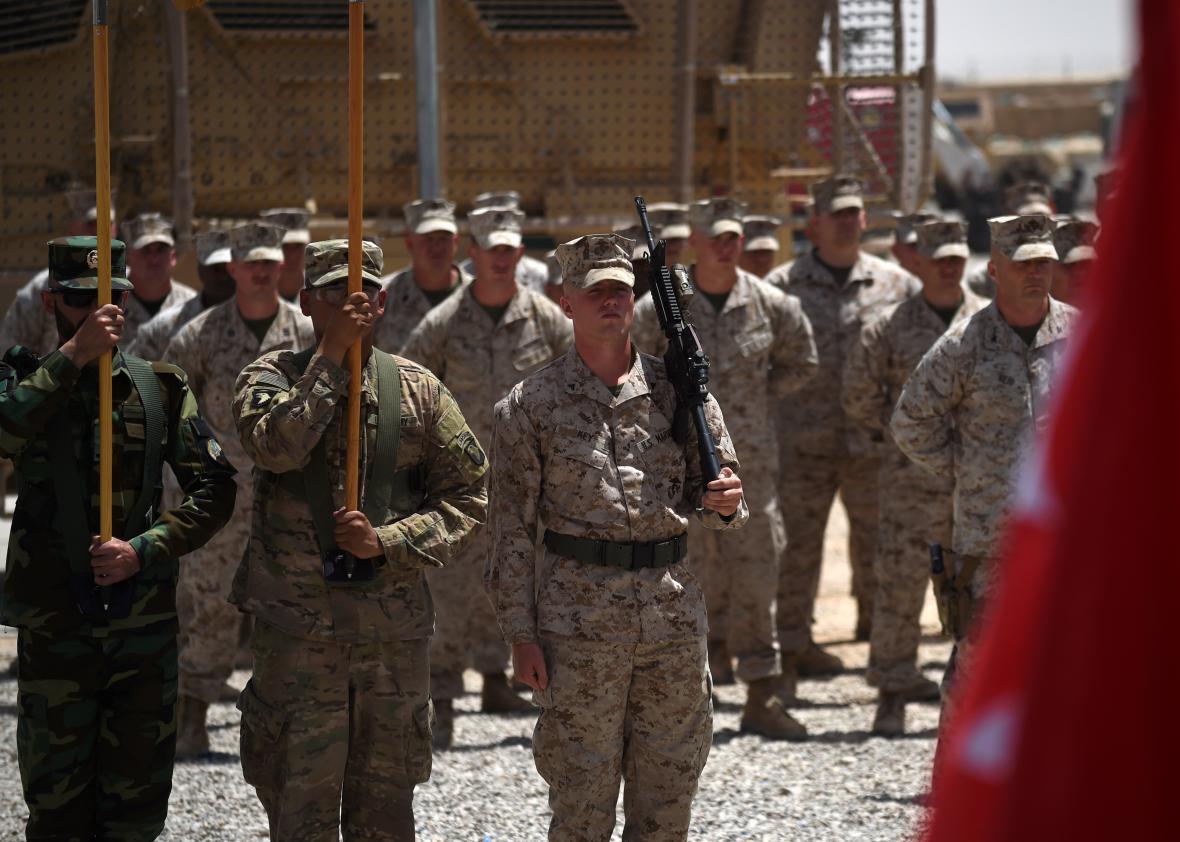The Pentagon plans to deploy 4,000 additional troops to Afghanistan, a Trump administration official has told the Associated Press:
The decision by Defense Secretary Jim Mattis could be announced as early as next week, the official said. It follows Trump’s move to give Mattis the authority to set troop levels and seeks to address assertions by the top U.S. commander in Afghanistan that he doesn’t have enough forces to help Afghanistan’s army against a resurgent Taliban insurgency. The rising threat posed by Islamic State extremists, evidenced in a rash of deadly attacks in the capital city of Kabul, has only fueled calls for a stronger U.S. presence, as have several recent American combat deaths.
The bulk of the additional troops will train and advise Afghan forces, according to the administration official, who wasn’t authorized to discuss details of the decision publicly and spoke on condition of anonymity. A smaller number would be assigned to counterterror operations against the Taliban and IS, the official said.
A Pentagon spokesman told the AP that no final decision has been made. The AP says there are currently at least 10,400 U.S. troops already in the country, including at least 2,000 not included in the official 8,400 troop cap imposed by the Obama administration. That 2,000, the AP’s Lolita Baldor and Robert Burns write, includes “forces that are technically considered temporary even if they’ve been in the war zone for months.”
On Thursday, Slate’s Fred Kaplan wrote about the folly of letting Mattis set the administration’s Afghanistan strategy and predicted that more troops were on the way:
Mattis was an excellent wartime commander as a Marine. He is well-read in history and philosophy. But even the best Marines are trained mainly to execute policy, not to make it. And to the best wartime generals, the mandate of carrying out policy means winning the war. Retreating, withdrawing, drawing down—these might (or might not) be the preferences of a president, who views a war’s costs and benefits in the context of many other priorities, but they have little place in the thinking of a general whose job is to focus only on the war. …
In other words, by turning over his authority to Mattis, Trump has all but guaranteed that more American troops will soon be sent to Afghanistan. Senior officers in the Pentagon have reportedly asked for another 5,000 troops in addition to the 8,000 still there. It’s a fair bet that Mattis will endorse the request. And it’s also a fair bet that they won’t be the last American troops sent over.
Slate contributor Phillip Carter recommended in May that the administration pursue a “minimalist counterterrorism strategy” in keeping with its America First rhetoric and noted a dissonance between that rhetoric and the blanket authority Trump has proved willing to give the Pentagon. “This dissonance may reflect a split of opinion between Trump and his political aides, and the military leaders he’s picked to run his Pentagon and National Security Council,” he wrote. “If he could restrain his penchant for dishonesty and misinformation, he might accidentally articulate the true goals and costs of our continued war in Afghanistan. But without a president who can level with his administration and the American people, the forever war will grind on, consuming lives and dollars for more years to come, with no end in sight and no way to judge whether it has all been worth it.”
